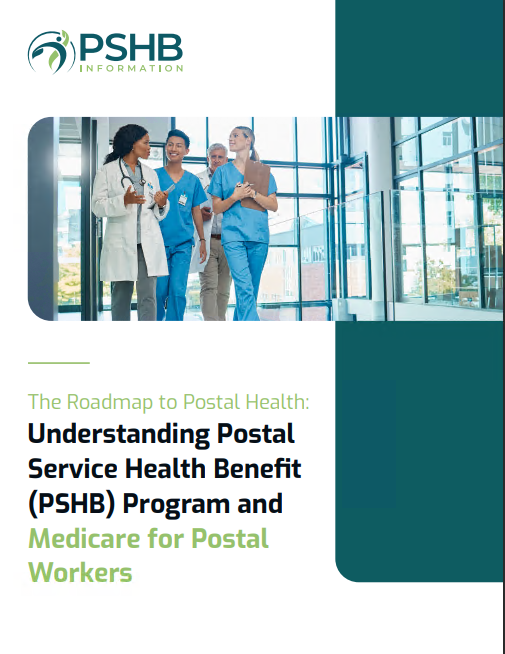Key Takeaways
-
Understanding how coinsurance rates work can help you predict your healthcare costs and make informed decisions about your Postal Service Health Benefits (PSHB) plan.
-
Comparing coinsurance rates and evaluating plan features ensures you select a plan tailored to your financial and healthcare needs.
What Coinsurance Means for You
When choosing a Postal Service Health Benefits (PSHB) plan, you’ll often encounter the term “coinsurance.” This cost-sharing arrangement determines how much you pay for covered services after meeting your deductible. For example, with a 20% coinsurance rate, you pay 20% of the cost of care while your plan covers the remaining 80%. Sounds simple, right? However, the reality is more nuanced and varies widely depending on the plan you choose.
Understanding coinsurance is essential to managing your out-of-pocket costs effectively. Knowing why rates differ and how they affect your total healthcare expenses can help you navigate your options confidently.
Why Coinsurance Rates Vary
Coinsurance rates aren’t standardized across PSHB plans. Instead, they reflect factors like coverage type, network size, and plan design. Here are some reasons for these differences:
Plan Type and Coverage Scope
Plans offering broader coverage or including a larger provider network may have higher coinsurance rates. These plans often aim to balance extensive benefits with cost-sharing to keep premiums manageable.
In-Network vs. Out-of-Network Services
Most plans have different coinsurance rates for in-network and out-of-network providers. In-network rates tend to be lower since providers agree to reduced fees with the insurer. Out-of-network care often comes with higher coinsurance, encouraging members to stay within the network.
High-Deductible Plans
High-deductible health plans (HDHPs) frequently feature lower premiums but higher coinsurance. These plans are ideal for individuals who anticipate minimal healthcare needs but want coverage for catastrophic events.
Balancing Coinsurance and Deductibles
When comparing plans, it’s important to view coinsurance alongside deductibles and out-of-pocket maximums. These components work together to determine your total costs:
-
Deductibles: The amount you pay before coinsurance kicks in. Plans with low deductibles may offset this benefit with higher coinsurance rates.
-
Out-of-Pocket Maximums: The cap on how much you pay annually for covered services. Once you hit this limit, the plan covers 100% of costs.
Evaluate how these factors interact with coinsurance. A plan with a higher coinsurance rate but a lower deductible might suit someone who anticipates regular medical expenses. Conversely, low coinsurance plans with higher deductibles are better for occasional healthcare needs.
How to Compare Coinsurance Rates
Assess Your Healthcare Needs
Start by reviewing your past medical expenses. Ask yourself:
-
How often do you visit healthcare providers?
-
Do you require specialist care or frequent prescriptions?
-
Are you managing a chronic condition?
Understanding your typical usage helps identify plans with coinsurance rates that align with your expected costs.
Examine Plan Summaries
Each PSHB plan provides a summary of benefits. This document outlines coinsurance rates for various services, such as:
-
Primary care visits
-
Specialist appointments
-
Diagnostic tests and imaging
-
Emergency room care
Compare these rates to identify potential savings or trade-offs.
Factor in Network Access
If you’re attached to specific providers, ensure they’re in-network under your preferred plan. In-network coinsurance rates are almost always lower, making network selection a critical factor.
Consider Out-of-Pocket Protections
Plans with lower coinsurance often compensate by increasing premiums or out-of-pocket maximums. Make sure you’re comfortable with the overall cost structure before committing.
Tips for Making the Best Choice
Choosing the right coinsurance rate involves balancing affordability and access to care. Here are some tips to guide your decision:
1. Evaluate Long-Term Costs
Focus on total costs rather than individual components like premiums or coinsurance. Adding up deductibles, coinsurance, and out-of-pocket limits provides a clearer picture of what you’ll spend annually.
2. Leverage Preventive Care Benefits
Many PSHB plans offer preventive services at no additional cost, regardless of coinsurance. Take advantage of these benefits to reduce your overall medical expenses.
3. Anticipate Life Changes
Your healthcare needs can change due to aging, family growth, or unexpected medical conditions. Choose a plan with flexible coinsurance that accommodates future needs.
4. Use Cost Estimation Tools
Many PSHB plans provide tools to estimate your costs based on usage patterns. These calculators help you see how coinsurance rates impact your budget in real scenarios.
Understanding Coinsurance in Key Healthcare Scenarios
Coinsurance plays a significant role in determining your out-of-pocket costs for common healthcare needs. Here’s how it typically applies:
1. Routine Doctor Visits
For primary care visits, coinsurance rates are usually straightforward. A 20% coinsurance rate on a $150 visit means you’ll pay $30. If you expect frequent visits, prioritize plans with low coinsurance for office visits.
2. Specialist Care
Specialist visits often come with higher coinsurance rates. Compare plans based on your need for specialists and the coinsurance rates attached to those services.
3. Hospital Stays
Coinsurance for inpatient care can significantly impact costs. For example, a 20% coinsurance rate on a $10,000 hospital stay means you’d pay $2,000 out of pocket. Evaluate plans based on their inpatient coinsurance rates and annual out-of-pocket limits.
Making Coinsurance Work for You
Understanding coinsurance isn’t just about minimizing costs; it’s about maximizing value. By carefully reviewing plan options and considering your healthcare needs, you can choose a PSHB plan that offers the right balance of affordability and access.
Coinsurance Choices Can Shape Your Healthcare Experience
The coinsurance rate you select can influence your overall satisfaction with your PSHB plan. By evaluating your healthcare needs, comparing costs, and considering long-term implications, you can confidently select a plan that supports your well-being and financial goals.






